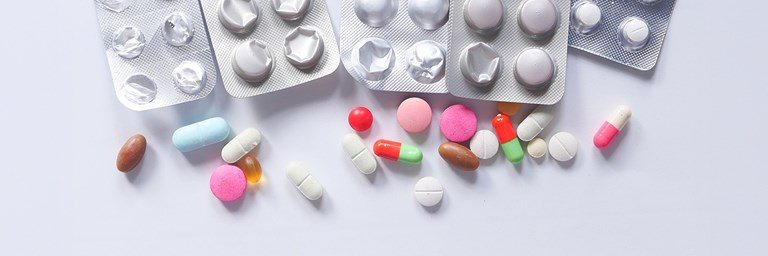Antibiotic Resistance: how to prevent it

Antibiotic resistance (or bacterial antimicrobial resistance) is one of the primary public health issues1. In 2019 alone, antibiotic resistance was directly responsible for 1.27 million deaths worldwide, according to estimates by the World Health Organization (WHO) 2. This could reach 10 million deaths annually by the year 20502.
Antibiotic resistance occurs when bacteria no longer respond to antibiotics, making infections difficult to treat1. In the broader context, antibiotic resistance can hinder the success of numerous life-saving medical procedures, including chemotherapy, transplantation, caesarean sections and other surgical procedures1. It also has an impact on health systems and the economy, as it creates a need for more intensive and differentiated treatments, and poses a threat to animal and plant health1. Here are the causes of antibiotic resistance and the measures to prevent it. When everyone is committed, individual action has a much bigger impact.
What is antibiotic resistance?
Antibiotics are medicines used to prevent or treat infections caused by bacteria3. Small genetic changes cause these micro-organisms to evolve naturally over time1. When their structure becomes more resistant to the action of drugs4, they are said to be antibiotic-resistant1. The bacterial strains that survive are those that adapt and are able to proliferate despite the action of the antibiotic5.
Causes of antibiotic resistance
What are the causes of antibiotic resistance? Bacterial mutations occur naturally, but are accelerated by excessive and inappropriate use of antibiotics1.
The more antibiotics are used – often inappropriately – the greater the number of bacterial mutations and the likelihood that one of them is resistant to therapy4. In evolutionary terms, this means that continuous use of antibiotics promotes the emergence and spread of more resistant bacterial strains5.
It is important to remember that unnecessary use of antibiotics provides no particular benefits but can produces side effects4.
Hospital stays are another potential risk factor. It has been shown that 71% of hospital-acquired infections – also known as healthcare-associated infections (HAIs) or nosocomial infections – contracted during time spent in healthcare facilities are resistant to antibiotics6. In addition to treatment-related risk factors, poor adherence to hygiene standards and to infection prevention measures also contribute7.
How to prevent antibiotic resistance
Why is the problem not confined to individual patients? Because the resistant bacterial strain can be transmitted to patients who may not have used antibiotics, but who nevertheless will not respond to therapies4. In order to prevent antibiotic resistance, both physicians8 and patients need to be mindful of the correct use of antibiotics9. Patients should only take them if they are prescribed by a doctor and follow the instructions provided9. They should complete the full course of treatment prescribed, without stopping or making changes of their own accord, even if they begin to feel better10. Finally, medicines should be disposed of properly9. Any leftover packages should not be passed on to other people9. As a general rule, it is important to wash your hands regularly and thoroughly and to keep up with recommended vaccinations9. We can (and should) all do our part to prevent antibiotic resistance.
The role of superbugs
Superbugs, or multi-resistant bacteria, are micro-organisms that do not respond to several classes of antibiotics and cause infections that are very difficult to eradicate11. They can often be identified through laboratory tests11. Treatments can take longer or consist of a combination of several drugs, helping to lower the risk of serious complications that can often occur11. WHO has updated its list of the most dangerous bacteria, among which are pathogens resistant to last-resort antibiotics and responsible for hospital infections12.
References
- World Health Organization (WHO), “Antimicrobial resistance”, 21 November 2023
- Mestrovic T. et al., “The burden of bacterial antimicrobial resistance in the WHO European region in 2019: a cross-country systematic analysis”, The Lancet Public Health, Volume 7, Issue 11, e897 - e913
- Patel P., Wermuth H. R., Calhoun C. et al., “Antibiotics”. [Updated 2023 May 26]. In: StatPearls [Internet]. Treasure Island (FL): StatPearls Publishing; 2025 Jan-. Available from: https://www.ncbi.nlm.nih.gov/books/NBK535443/
- Habboush Y., Guzman N., “Antibiotic Resistance”. [Updated 2023 Jun 20]. In: StatPearls [Internet]. Treasure Island (FL): StatPearls Publishing; 2025 Jan-. Available from: https://www.ncbi.nlm.nih.gov/books/NBK513277/
- World Health Organization (WHO), “Antimicrobial resistance”, 19 September 2024
- Istituto Superiore di Sanità (ISS), “Antibiotico-resistenza”, 24 April 2022
- European Centre for Disease Prevention and Control (Ecdc, UE), Healthcare-associated infections
- ISS, “Infezioni ospedaliere e correlate all'assistenza”, 23 October 2024
- Salam M. A., Al-Amin M. Y., Salam M. T., Pawar J. S., Akhter N., Rabaan A. A., Alqumber M. A. A., “Antimicrobial Resistance: A Growing Serious Threat for Global Public Health”. Healthcare (Basel). 2023 Jul 5;11(13):1946. doi: 10.3390/healthcare11131946. PMID: 37444780; PMCID: PMC10340576, https://www.mdpi.com/2227-9032/11/13/1946
- Centers for Disease Control and Prevention (CDC, Usa), “Healthy Habits: Antibiotic Do's and Don'ts”, 22 April 2024
- Mayo Clinic (nonprofit, Usa), “Antibiotics: Are you misusing them?”, 9 April 2024
- Cleveland Clinic (nonprofit, Usa), “Superbug”, 24 July 2024
- World Health Organization (WHO), “WHO updates list of drug-resistant bacteria most threatening to human health”, 17 May 2024ì
